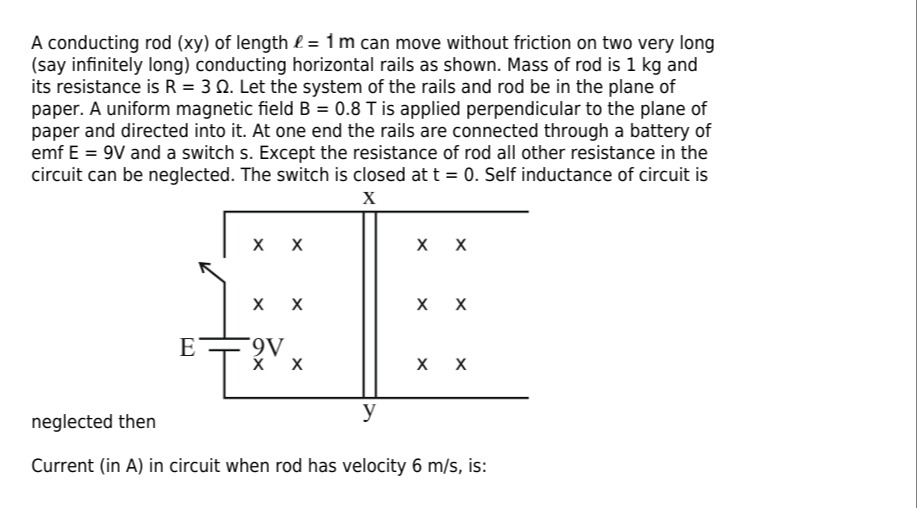Question
Question: A conducting rod (xy) of length $\ell$ = 1 m can move without friction on two very long (say infinit...
A conducting rod (xy) of length ℓ = 1 m can move without friction on two very long (say infinitely long) conducting horizontal rails as shown. Mass of rod is 1 kg and its resistance is R = 3 Ω. Let the system of the rails and rod be in the plane of paper. A uniform magnetic field B = 0.8 T is applied perpendicular to the plane of paper and directed into it. At one end the rails are connected through a battery of emf E = 9V and a switch s. Except the resistance of rod all other resistance in the circuit can be neglected. The switch is closed at t = 0. Self inductance of circuit is
neglected then
Current (in A) in circuit when rod has velocity 6 m/s, is:

1.4
Solution
The circuit contains a battery and a moving rod in a magnetic field. The moving rod induces a motional emf Eind=Bℓv. This induced emf opposes the battery emf E. The net emf in the circuit is E−Eind. The current in the circuit is given by Ohm's law: I=Total resistanceNet emf=RE−Bℓv. Substitute the given values E=9V, B=0.8T, ℓ=1m, v=6m/s, and R=3Ω to find the current.
Eind=(0.8)(1)(6)=4.8V.
I=39−4.8=34.2=1.4A.
